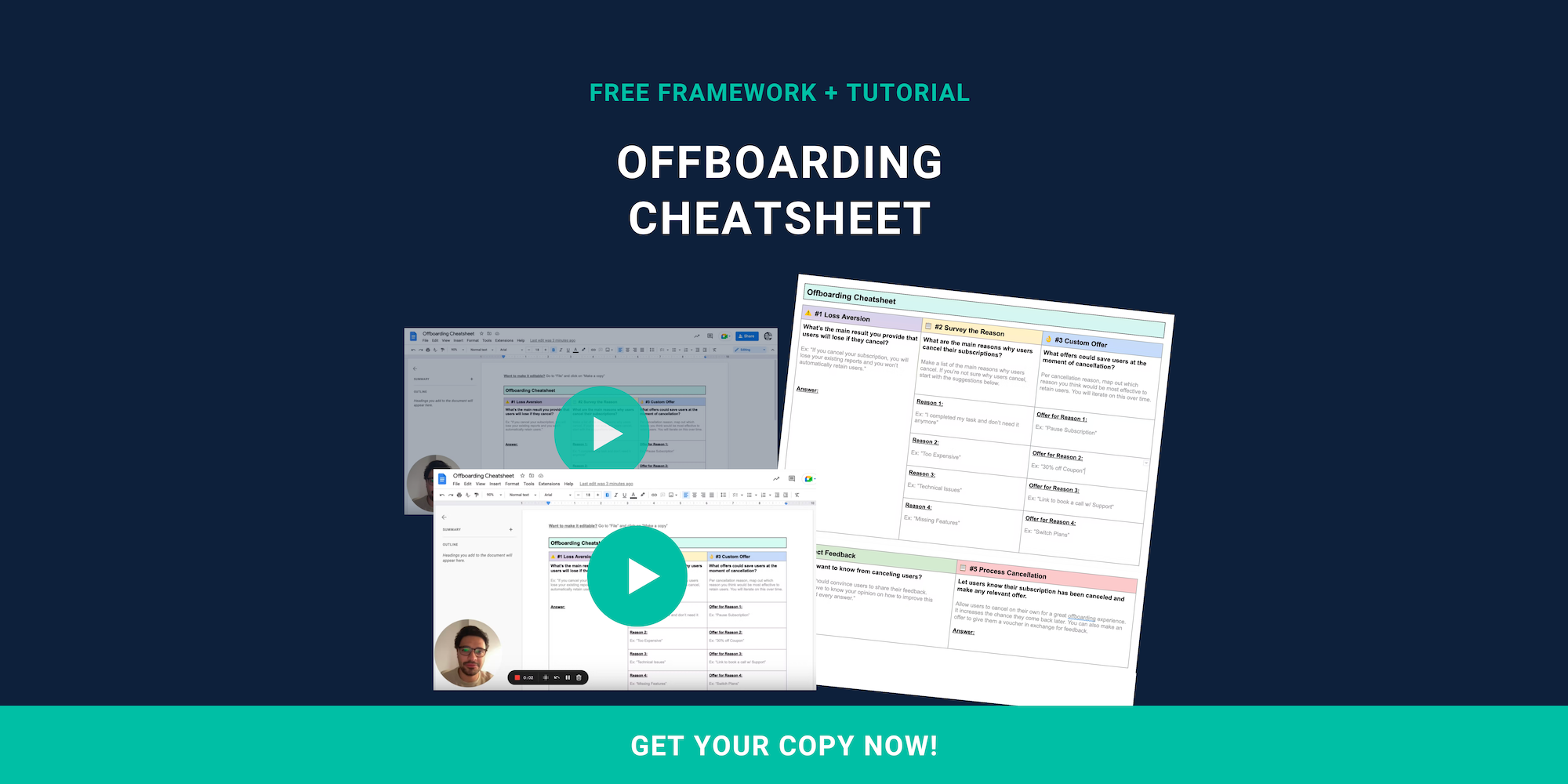Customer success metrics are essential for measuring efforts to increase customer retention.
There’s a crucial relationship between customer success and revenue growth. If customers are not able to unlock value from your SaaS product, they’re unlikely to continue using your product for much longer. Customer success metrics are essential for tracking and monitoring the overall sustainability of your business model. To scale a SaaS company, customer success is vital.
Customer Success Metrics - Why Do They Matter?
A study revealed that 30% of SaaS companies have seen an increase in their churn rates over the past year. For SaaS companies to see a rise in customer retention, they must place a focus on customer success. If users are not able to unlock value from your SaaS product, they won’t wait around for long to find it. The sooner a SaaS product can deliver value, the better.
According to Forrester Research, over 72% of businesses say that improving customer success is their number one priority. They recognize the importance of increasing customer retention and understand that customer success is essential to reducing churn. By tracking customer success metrics, you will be able to measure how successful your customers are.
Can you afford to run a SaaS business with low customer retention and high churn? Investing in new customers is between five and 25 times more expensive than retaining new ones. If you are committed to achieving your growth ambitions, you should actively track and monitor a range of customer success metrics to help predict future growth and identify shortcomings.
Customer Health Score
Are customers unlocking value from your solution? To ensure you’re meeting the needs of customers, this question should be asked repeatedly. You need to know how often customers are using your product and how much impact it is having on their personal or professional life. When calculating a customer health score, you should consider the following factors:
- Product Usage
- Customer Feedback
- Community Participation
- Marketing Engagement
- Website Activity
- Customer Support Cases
- Product Upgrades & Renewals
These are all customer behavior metrics that can be ranked based on their level of importance. Some SaaS companies may value certain customer behavior metrics more than others. It all depends on how you define customer health and which metrics you consider to be predictive. Choosing a scoring system is an important part of developing a customer health score.
Qualitative Customer Feedback
The easiest way to collect qualitative customer feedback is to send out a survey. You should pose a handful of questions to your customer base. These should help you to determine how they feel about your customer success representatives. Based on their experiences, you can encourage customer success representatives to make changes to their approaches.
Customer Churn Rate
This is a critical customer success metric to measure. The lower your customer churn rate is, the better. This formula provides you with an accurate measure of how many customers you are losing over a given period of time. For a SaaS business to be sustainable, this number needs to be no higher than 5-7% annually. The customer churn rate formula is simple:
(Lost Customers ÷ Total Customers at the Start of Time Period) x 100
Monthly Recurring Revenue
Monthly recurring revenue is one of the most important customer success metrics that you should track. How much revenue is your SaaS company generating from monthly recurring subscriptions? The answer to this question must be tracked consistently. The general health and sustainability of your SaaS business model can be measured through MRR.
(Number Of Customers x Average Billed Amount)
Customer Lifetime Value
Customer lifetime value gives you an idea of how much revenue you can expect to generate from a single customer. When this value is high, it’s a sign that customers are successfully solving a problem by using your solution. When this value is low, it may be an indication that customer success has not been a priority in your business and there’s poor product-market fit.
To calculate your average customer lifetime value, you will need access to the following data:
- Annual revenue per customer
- Customer relationship in years
- Customer acquisition cost (CAC)
(Average Purchase Value x Average Purchase Frequency Rate x Average Customer Lifespan)
Customer Retention Cost
How can you prove that your customer success efforts are cost-effective? While it’s vital to ensure that customers are succeeding in using your SaaS solution to unlock value, these efforts must be financially sustainable. Customer retention cost, otherwise known as CRC, outlines the total cost of your customer success program to help you measure effectiveness.
(Sum Of All Customer Success Expenses / Number Of Customers)
First Contact Resolution Rate
Customers need their problems to be solved quickly so they can get back to pursuing goals. You should be measuring the first contact resolution rate. This is the percentage of customer cases that are successfully resolved within the very first interaction. When the number is high, this is a clear indication that your support team is effective at addressing customer needs.
(Number Of Tickets Closed After First Interaction / Total Number Of Service Cases Received)
Customer Satisfaction Score
A customer satisfaction score can be obtained by asking customers how they would rate their likelihood of recommending your SaaS solution to others. This will give you a clear indication of how customers feel after interacting with your support or customer success team. To accurately measure your customer satisfaction score, you should use the following formula:
(Number Of Positive Scores / Number Of Total Scores) x (100)
Renewal Rate
If your SaaS solution has a high renewal rate, this is a strong sign that your product is driving customer success. There’s no greater stamp of approval than customers wanting to continue paying for your SaaS solution. When you have a low renewal rate, this is a sign that customers struggle to unlock value from your solution and are not supported by customer success programs.
(Number Of Renewals / Number Of Customers Eligble To Renew) x (100)
To ensure you have positive customer success metrics, you need to get the right systems in place to prevent churn and drive customer retention. Try Raaft for free today.

Offboarding Cheatsheet
This framework + video tutorial will help you design a better cancellation process.
Some of our featured articles

Adam Crookes

Adam Crookes

Adam Crookes
Customer Success insights in your inbox
Helping Founders and Customer Success Managers handle customer retention effectively.
We will only ever send you relevant content. Unsubscribe anytime.


